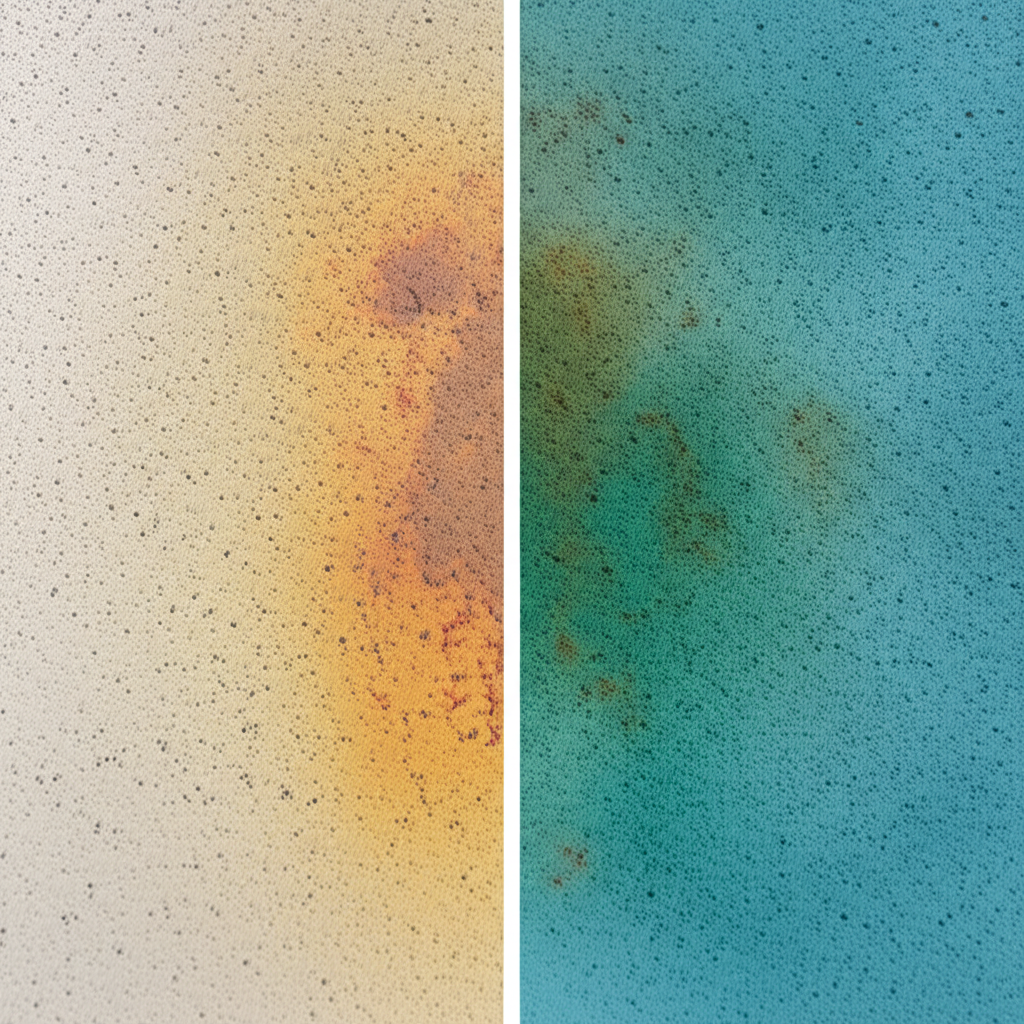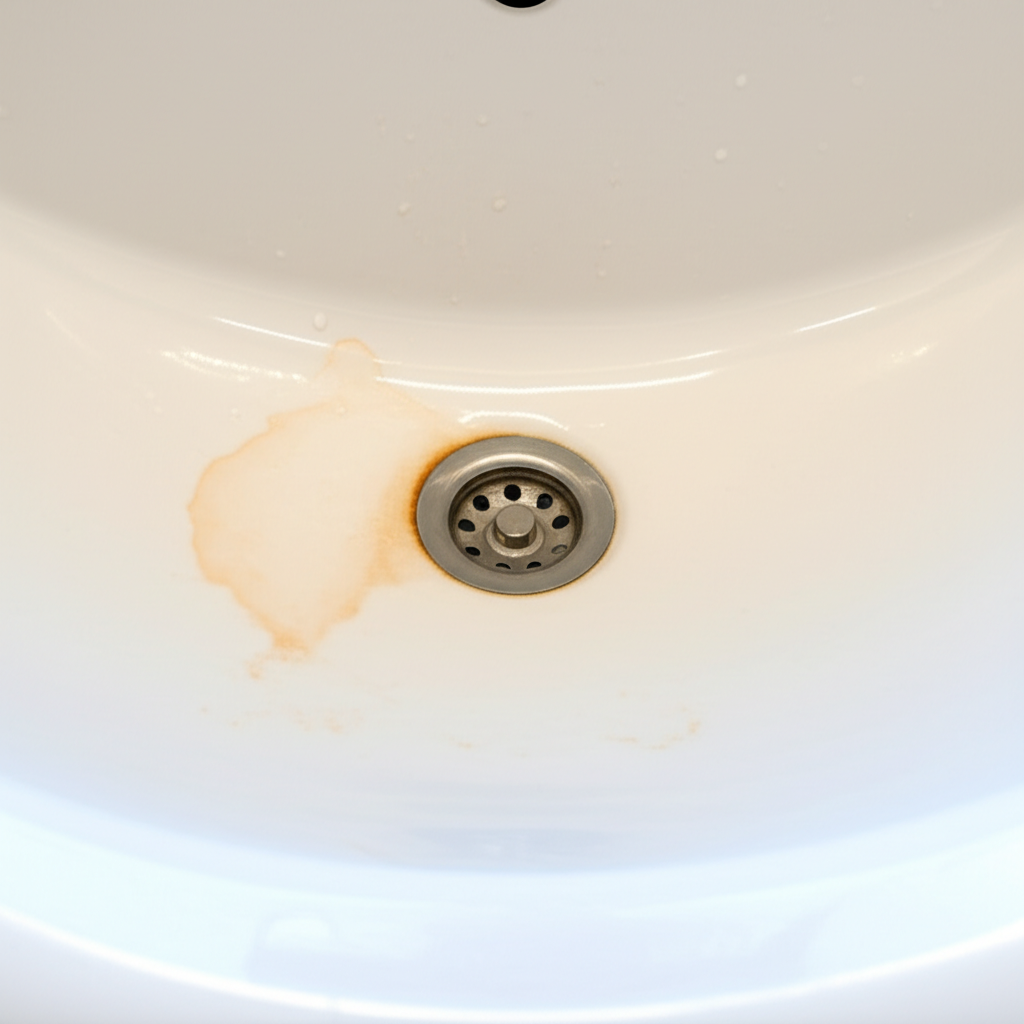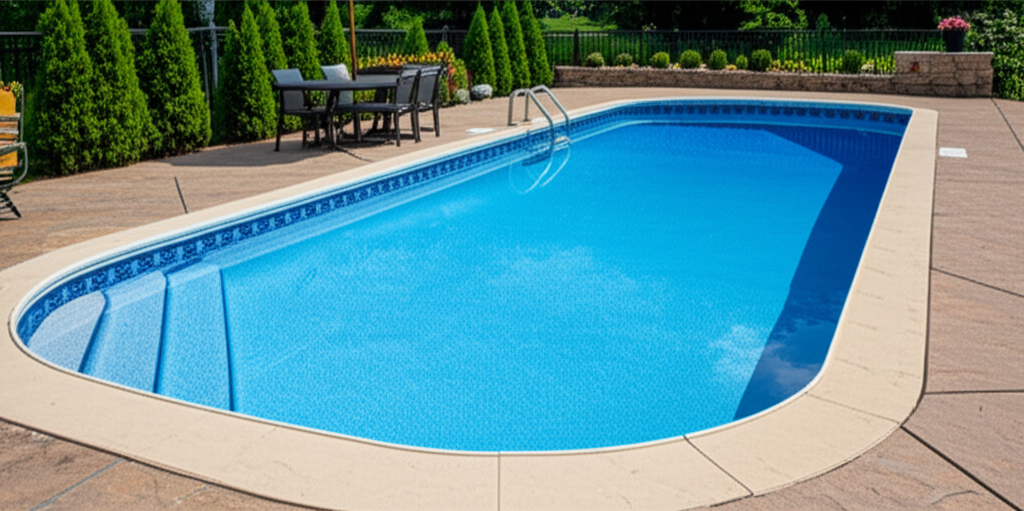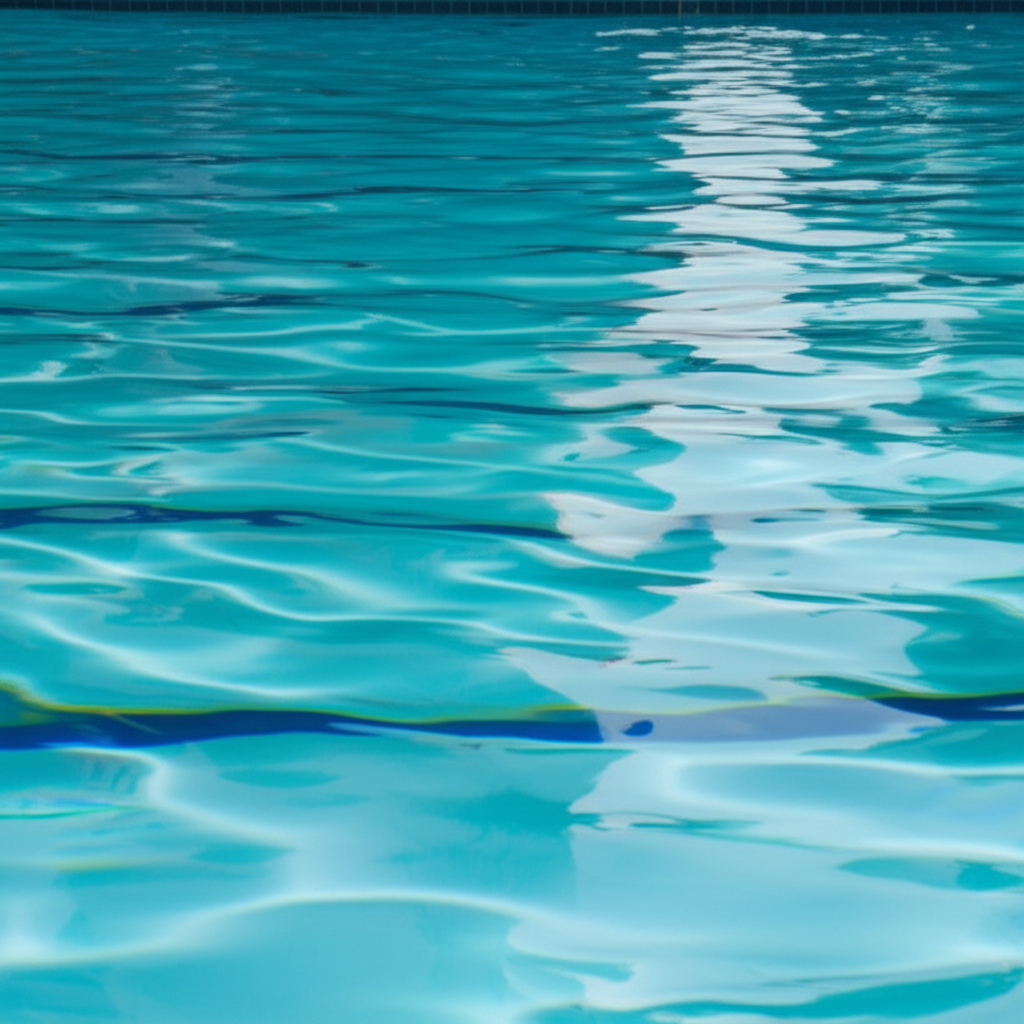- Understanding the Culprits: Iron & Copper Stains
- Preparation: The First Step to Effortless Stain Removal
- Effortless Iron & Copper Stain Removal: Tried and True Methods
- Tackling Iron Stains
- Eliminating Copper Stains
- Targeted Techniques for Specific Surfaces
- Prevention is Key: Avoiding Future Metal Stains
Metal stains, particularly those from iron and copper, can be a frustrating and tenacious eyesore, marring the beauty of everything from your pristine porcelain sink to your outdoor concrete patio. These discolored blemishes often appear as persistent reddish-brown, orange, blue, or even blue-green streaks and patches, giving surfaces a neglected and uninviting appearance. Fortunately, with the right knowledge and techniques, achieving effortless iron & copper stain removal is entirely possible, restoring your surroundings to their original luster.
Understanding the Culprits: Iron & Copper Stains
Before diving into removal methods, it’s crucial to understand what causes these specific types of metal stains. Knowing the source not only helps in effective cleaning but also in preventing future occurrences.
Iron Stains: These are arguably the most common and recognizable metal stains. They typically manifest as reddish-brown, orange, or yellowish streaks.
Sources: High iron content in well water, corroding galvanized pipes, rusty tools left on surfaces, fertilizers containing iron, or even sprinkler systems hitting exterior walls with iron-rich water.
Locations: Commonly found in toilets, sinks, bathtubs, showers, concrete driveways, stucco, and laundry facilities.
Copper Stains: Less frequent than iron stains but equally problematic, copper stains present as distinctive blue, blue-green, or sometimes even blackish marks.
Sources: Corroding copper or brass pipes, fixtures, or fittings, especially in areas with hard water or acidic water. Certain fungicides or algaecides used in pools can also contain copper and leave stains.
Locations: Primarily seen in sinks, showers, bathtubs (especially fiberglass or acrylic), swimming pools, and on grout.
Preparation: The First Step to Effortless Stain Removal
Regardless of the stain type, preparation is paramount for both safety and effectiveness.
1. Safety First: Always wear appropriate personal protective equipment (PPE), including rubber gloves and eye protection. Ensure adequate ventilation, especially when working indoors or with stronger chemicals.
2. Identify the Surface: Different surfaces react differently to cleaning agents. Porcelain, fiberglass, concrete, and fabric each require a tailored approach.
3. Test in an Inconspicuous Area: Before applying any cleaner to the entire stain, test it on a small, hidden spot to ensure it doesn’t cause damage or discoloration to the underlying material.
4. Gather Supplies: Have all necessary items on hand: cleaning agents, brushes (non-abrasive for delicate surfaces), sponges, spray bottles, and rags.
Effortless Iron & Copper Stain Removal: Tried and True Methods
Both iron and copper stains respond well to acidic cleaners, but the strength and type of acid can vary.
Tackling Iron Stains
1. Mild Acid Solutions (for fresh or lighter stains):
Lemon Juice or White Vinegar: For recent or minor iron stains, a simple solution of concentrated lemon juice or white vinegar can work wonders.
Application: Spray or apply directly to the stain, allow it to sit for 15-30 minutes, then scrub with a non-abrasive brush or sponge and rinse thoroughly. Repeat if necessary. This method is safe for most household surfaces.
2. Oxalic Acid (for stubborn stains):
Many commercial rust removers and products like Bar Keepers Friend contain oxalic acid, which effectively dissolves iron oxide.
Application: Follow product instructions precisely. Typically, you’ll create a paste or solution, apply it to the stain, let it dwell for the recommended time (e.g., 5-10 minutes), then scrub and rinse. Always ensure good ventilation. This is particularly effective for porcelain, fiberglass, and even some concrete applications.
3. Hydrochloric Acid (Muriatic Acid – use with extreme caution):
For very severe, deeply embedded iron stains on robust outdoor surfaces like concrete or masonry, dilute hydrochloric (muriatic) acid can be used as a last resort.
Caution: This is a highly corrosive substance. It should only be used outdoors, with full PPE (gloves, eye protection, respirator, protective clothing), and following manufacturer’s dilution instructions strictly. Always wet the surface first to prevent streaking, apply the diluted acid carefully, scrub briefly, and rinse immediately and thoroughly. Never mix with bleach or other cleaners. Consider professional help for muriatic acid applications.
Eliminating Copper Stains
1. Vinegar and Salt Paste (for household surfaces):
This classic concoction is excellent for blue-green copper stains on sinks, porcelain, and even some metals. The acetic acid in vinegar works with the mild abrasive action of salt.
Application: Mix white vinegar with enough table salt to form a thick paste. Apply the paste generously to the stain, letting it sit for 30 minutes to an hour. Scrub gently with a non-abrasive pad, then rinse completely with clean water.
2. Lemon Juice and Salt Paste:
Similar to vinegar and salt, the citric acid in lemon juice provides an effective cleaning agent.
Application: Combine fresh lemon juice with salt to form a paste. Apply, let sit, scrub, and rinse as with the vinegar and salt method.
3. Ammonia-based Cleaners (specific use, with caution):
For some copper stains, particularly on brass or bronze fixtures (not pure copper), ammonia-based cleaners can be effective.
Caution: Never mix ammonia with bleach, as this creates highly toxic fumes. Ensure good ventilation. Test in an inconspicuous area first.
4. Commercial Copper Stain Removers:
For persistent copper stains, particularly in swimming pools (often caused by algaecides), specialized commercial copper stain removers are available. These products are formulated to chelate or bind with the copper ions, lifting them from the surface.
Application: Always follow the product’s specific instructions for dilution and application, as these can vary significantly.
Targeted Techniques for Specific Surfaces
Porcelain & Ceramic: Stick to mild acids (vinegar, lemon juice) or oxalic acid-based cleaners (like Bar Keepers Friend). Avoid harsh abrasives that can scratch the glaze.
Fiberglass & Acrylic: These surfaces are delicate. Use very mild acids or specific fiberglass-safe cleaners. Never use abrasive scrubbers or strong acids like muriatic acid.
Concrete & Masonry: These robust surfaces can handle stronger acids if needed, but always pre-wet the surface and perform a patch test. Power washing after treatment can be beneficial.
Fabrics: For rust stains on clothing, specialized laundry rust removers are available. Do not put rust-stained items in a dryer, as the heat will set the stain permanently.
Prevention is Key: Avoiding Future Metal Stains
The most effortless stain removal is preventing them from happening.
Water Filtration: If you have well water or hard water with high iron/copper content, consider installing a whole-house water filtration system designed to remove these minerals.
Fix Leaks: Repair dripping faucets or pipes promptly to prevent mineral buildup and corrosion.
Regular Cleaning: Routine cleaning of sinks, toilets, and showers can prevent stains from setting in.
Inspect Fixtures: Regularly check copper or brass fixtures for signs of corrosion and address them early.
Outdoor Care: Avoid leaving rusty tools or metal items on concrete or patios. Ensure sprinkler systems aren’t spraying iron-rich water onto your siding.
Pool Chemistry: Maintain proper pool water balance and avoid overuse of copper-based algaecides.
While metal stains from iron and copper can be incredibly stubborn, they are far from invincible. By understanding their causes, taking safety precautions, and employing the right cleaning agents and techniques, you can achieve impressive and seemingly effortless iron & copper stain removal. Patience and persistence are your allies in restoring the spotless shine to your home and outdoor areas.




